ECO MAISON-WATER PART 1
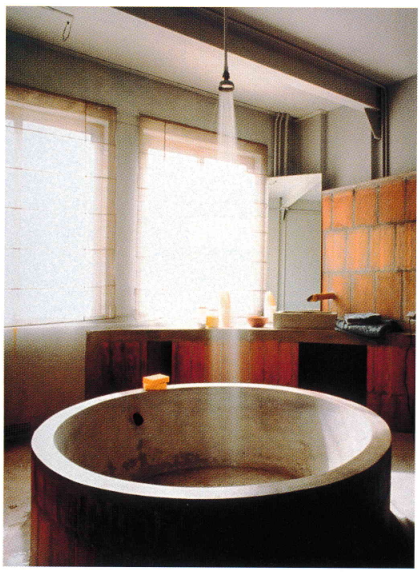
Saving water will become a crucial problem in the near future, and everyone can do a lot to reduce their consumption. As with energy, simple changes in habits lead to considerable savings. In the past, water was preserved as the precious resource that it is.
After decades of incredible waste, as if water were free, we need to change our bad habits and use them more wisely. Never let a faucet run unnecessarily, even for a short time – whether you brush your teeth, fill a glass, or shave. Over the past half century, water consumption has tripled, the largest proportion of this increase being due to washing and flushing. In some dry regions of the United States, as much as 80% of an average household’s water consumption is spent on watering lawns and washing cars. This is a huge waste of drinking water.
WASHING
- Modern dishwashers use less water than washing by hand. If you are considering purchasing a new model, choose the most energy efficient. In Europe, they are classified A ++. Always charge your machine to the maximum and choose the lowest temperatures or the ECO function. A full load consumes less water than two half loads.
- If you don’t have a dishwasher, fill one sink with washing water and the other with rinse water. Do not let the water run during the rinses. Do not scrub the pots while running the tap water. Let them soak.
- Wash the vegetables in a bowl or partially filled sink, not under running water, then re-use the water to water the houseplants or the garden.
- Always load your washing machine to the maximum and choose the lowest temperatures or the ECO function. If you plan to buy a new machine, choose the most energy efficient.
- Wash clothes, towels and household linen less frequently.
TOILETS
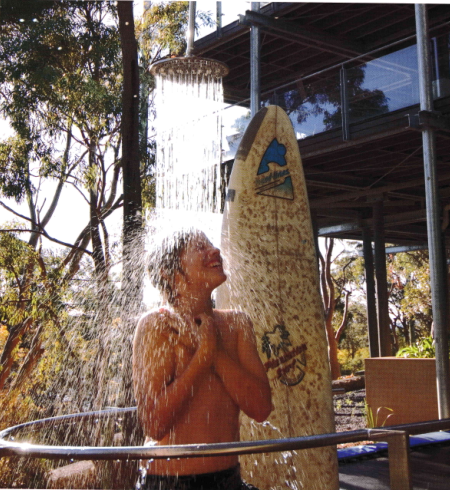
- Close the tap when you brush your teeth. Washing your teeth while running water wastes 6 liters of water per minute.
- Close the tap or the shower when you shampoo or shave.
- Take short showers instead of baths. A bath consumes 80 liters of water while on average, a shower consumes 6 liters per minute. Note that jet showers consume 15 liters per minute. You can buy a shower timer to make sure you don’t consume too much water – about 5 minutes is more than enough.
- Place a bucket in the shower while you wait for the water to warm, and use that cold water in the garden, to water the houseplants or to clean the toilet bowl.
- Bath young children together.
- Install limited flow shower heads and attach an aerator to all of your faucets.
- Use a bucket filled with water instead of a garden hose to wash your car, or go to a car wash that recycles water.
- Set the thermostat of your hot water tank to 60⁰C maximum.
BEVERAGES, FOOD
- Fill a carafe with water, place it in the refrigerator and use it as drinking water. Do not waste hot water by letting it run to cool.
- Do not buy bottled water. If you need to take water with you when you leave home, reuse a bottle in plastic filled at the tap.
- Pour only the amount of water you need into a kettle. If you are making only a cup of tea, do not boil than a cup of water. If the water is hard, descale your working kettle regularly. An ecological method of descaling is to soak the pan overnight in white vinegar.
- Reduce your consumption of meat. Meat production requires a large amount of water. Tea production requires less water than coffee.
- Cooking methods like steam cooking are more energy efficient and water efficient. The multi-stage steamer is more energy efficient than boiling vegetables separately. Do not fill a pan with water just to cook a few vegetables. Cooking food in a minimum amount of water preserves its nutrients. Choose a pan with the appropriate dimensions.
- Compost organic waste (peelings, etc.) instead of throwing them in the trash or in a household garbage disposal.
SANITERY
- Install dual control toilets and flush the toilet less often.
- Connect one of the many water-saving devices available (up to 1 liter saved per flush) to your toilet tank. Or you can place a plastic bottle filled with water there: to save water, the Duke of Edinburgh places a brick inside the tank!
- To check if your toilet is leaking, pour food coloring into the tank, and see if the bowl has colored marks on it.
GARDENING
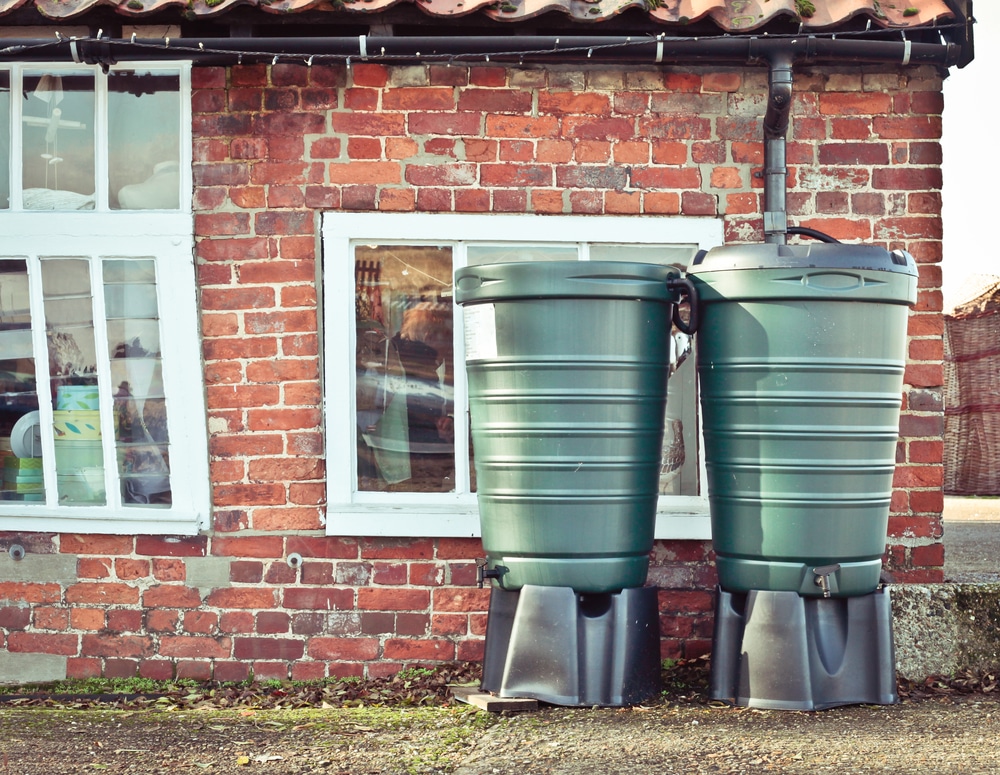
- Choose the plants according to their water needs.
- Recycle gray water (water from the washing machine, sink, shower and kitchen sink) for use in the garden.
- Collect rainwater in a barrel or tank.
- Sweep paved surfaces instead of spraying them.
MAINTENANCE
- Repair dripping faucets (up to 140 liters of wasted water per week) and leaks.
- Choose an equipped water meter to monitor your consumption.
- You can check for a leak by turning off the water and checking your meter twice separated by a short time interval.
- You need to know where the shutoff valve or power cut is located.
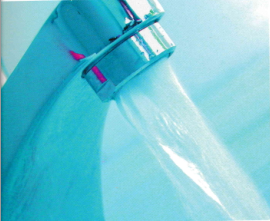
WATER-SAVING DEVICES
Another step towards a change in lifestyle and consumption is to invest in water saving devices, which are often inexpensive.
Faucets and shower heads: faucets and shower heads water savers are fitted with an aerator or a flow restrictor. Some can be fixed quite easily on existing taps.
The aerator (or foamer) reduces consumption by half because the presence of air bubbles reduces the flow, while the pressure and the volume of water appear identical.
With flow reducers, water is forced through very small orifices, which allow fine and firm spraying and a significant reduction in water consumption.
Water-saving toilets: the first low-flow toilets were not very efficient and, as a result, people flushed the toilet twice. Their design has been improved since then. Modern low-flow or dual-flush toilets consume much less than old-style toilets and are compulsory in some countries for any new installation. They allow you to choose between a half flush for liquid waste and a full flush for solid waste. Most countries have set a maximum limit of 6 liters for full flush and 3 liters for a half flush.
A new type of toilet, recently appeared on the market, is equipped with an integrated sink. When you wash your hands or let the water run in the sink, the water is diverted into the toilet tank and used as flushing water. Adaptable devices on old toilets also reduce water consumption. Some adapt to their tank to make dual flush toilets; others are used to control the flow of hunting.
Composting toilets: it is estimated that the use of toilets represents about a third of a household’s water consumption. Installing compost toilets is a good way to significantly reduce water consumption. This type of dry toilet, which transforms manure into organic compost, is directly connected to a large waterproof bin installed in the basement. From time to time, it is necessary to pour into the tank other organic matter, garden waste or peelings, to activate the decomposition of manure by micro-organisms in the presence of oxygen and water. An exhaust vent sucks odors and release above the roof. These toilets do not require principle no energy input, but a small fan is recommended.
The downside with composting toilets is that it is difficult to install them in a traditional house. They are prohibited in certain regions, for example in urban areas in the United States. However, they can be a good solution for homes located in remote areas where drainage is problematic. (The great writer Colette swore by outdoor toilets!).
RAINWATER COLLECTION
A very simple way to reduce water consumption is to collect rainwater and use it to water the garden or wash the car. The installation, fast and economical, generally consists in connecting a barrel or a tank, usually provided with a filter, to a gutter downpipe. Be aware that some roofs made of composite materials, such as asphalt, can pollute the water and make it unusable, even for watering the garden. Lead, commonly used for flashing, is another toxic pollutant.
|
|
Rainwater collected in barrels should not stay there too long, as it could become stale.
Larger, more sophisticated systems include an underground tank where rainwater is collected and stored. They are equipped with filters and pumps and produce water that is sufficiently clean for non-potable uses, but their installation can be difficult and their cost high. In all cases, the rainwater pipes and the drinking water pipes must be independent due to the risk of contamination
|
GRAY WATERS
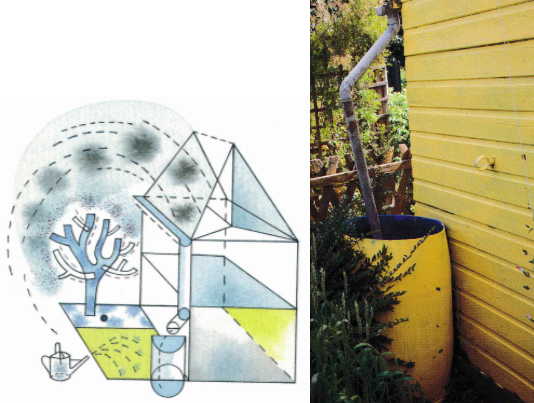
Gray water is lightly contaminated, uncontaminated water from faeces and from sinks, tubs and showers. They should not be confused with “black water”, hunting water, or with water from kitchen sinks, which contain fat, detergents and organic matter.
In some cases, when a rinse water is not too much soapy, gray water can be used directly in the garden or to wash the car. To use these waters, there is a simple device consisting of a 3.50 m hose fitted with a hand pump. You pass the hose through the window and place its end in a watering can or barrel. Activating the hand pump causes the siphon effect. The advantage of this device is that you can choose which water to recycle. The interception kits that connect to the outlet of the tub or sink hose collect all gray water indiscriminately.
For other non-potable uses, gray water must first be filtered. There is an ecological method which consists first of filtering water through gravel, then letting it flow into reed beds where micro-organisms play the role of biological purifiers there. This type of recycling requires a large area and presents certain risks, in particular the contamination of groundwater.
Many experts believe that saving water is more effective today than recycling it.
Continuing…
(Translated from ECO MAISON book of the architect Terence Conran)
 HOMA
HOMA

